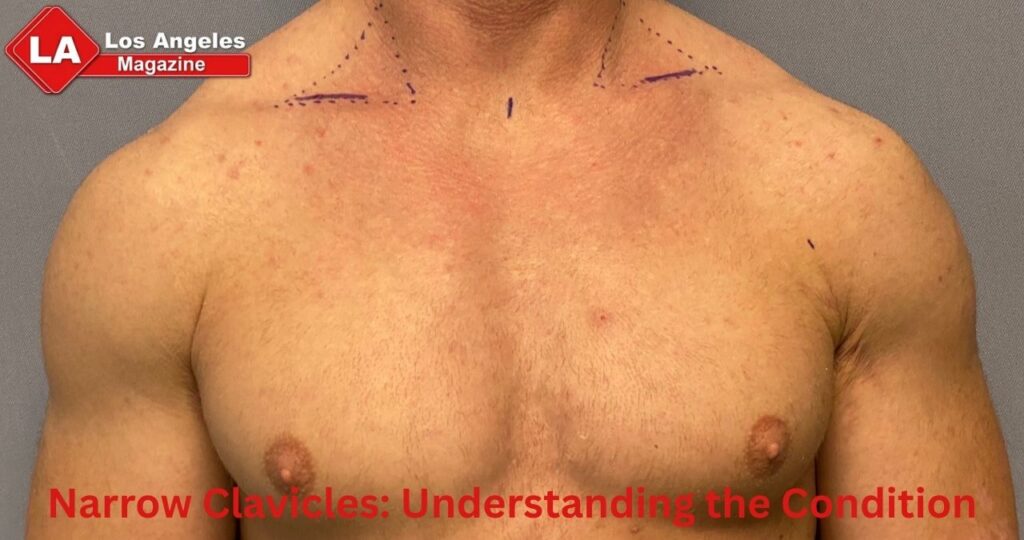The clavicles, commonly referred to as the collarbones, play a significant role in the structure of the human body. Located between the rib cage and the shoulders, these bones are responsible for providing stability and mobility to the shoulder joints. While most people are familiar with the clavicles as part of the skeletal system, a condition known as narrow clavicles is not as widely understood.
What Are Narrow Clavicles?
Narrow clavicles refer to clavicles that are abnormally thin or constricted, affecting the width of the upper chest and potentially altering the overall posture of the individual. The clavicle is typically shaped like an “S” and should be of a certain width to ensure optimal shoulder mobility and stability. When the clavicles are narrow, it may lead to a variety of physical issues, particularly concerning the shoulders, upper back, and overall posture.
This condition can be congenital (present at birth), or it can develop due to an injury, lifestyle, or certain health conditions. For some individuals, narrow clavicles may go unnoticed unless a medical professional conducts an examination, while for others, the condition may lead to noticeable discomfort or other physical symptoms.
Causes of Narrow Clavicles
The primary causes of narrow clavicles can be divided into two categories: genetic factors and external factors.
1. Genetic Factors
In some cases, narrow clavicles are congenital, meaning they are present from birth. This can be a result of genetic factors that cause a person’s bones to develop differently. In particular, certain genetic syndromes or conditions may lead to the development of narrow clavicles. These may include:
- Ehlers-Danlos Syndrome (EDS): This condition affects the connective tissue in the body, making it more flexible than usual, which can result in abnormal bone development.
- Turner Syndrome: A genetic disorder that affects females, often leading to skeletal abnormalities, including narrower clavicles.
- Skeletal Dysplasias: These are disorders that affect the growth and development of bones and cartilage, and in some cases, can lead to narrower clavicles.
2. External Factors
While less common, external factors can also play a role in the development of narrow clavicles. This may include:
- Trauma or Injury: A previous injury or fracture to the clavicle may lead to improper healing, resulting in a narrower or deformed clavicle.
- Postural Issues: Poor posture, especially when it leads to forward slouching, can impact the development of the clavicles over time. This is more likely to occur during adolescence when the bones are still growing.
- Nutritional Deficiencies: A lack of essential nutrients like calcium or vitamin D during bone development can lead to improperly formed bones, including the clavicles.
Symptoms of Narrow Clavicles
Not everyone with narrow clavicles will experience symptoms. However, for those who do, the symptoms can vary depending on the severity of the condition. Some of the most common symptoms associated with narrow clavicles include:
- Reduced Shoulder Mobility: Narrow clavicles may affect the full range of motion of the shoulders. This can result in difficulty raising the arms or rotating them.
- Postural Problems: Individuals with narrow clavicles may develop poor posture, including slouching or a forward head position.
- Pain or Discomfort: While not always present, some individuals with narrow clavicles may experience pain or discomfort in the shoulders or upper back, particularly when engaging in physical activities.
- Aesthetic Concerns: Narrow clavicles can make the chest appear more compressed or constricted, which may cause aesthetic concerns, especially in individuals who are self-conscious about their body image.
Diagnosis of Narrow Clavicles
If narrow clavicles are suspected, the condition can be diagnosed through a physical examination and imaging tests. A healthcare professional will look for signs of shoulder dysfunction, pain, or abnormal posture. Imaging techniques such as X-rays, CT scans, or MRIs may be used to evaluate the structure of the clavicles and determine their width and any abnormalities.
In cases where narrow clavicles are suspected to be caused by a genetic condition, further genetic testing may be recommended to confirm the diagnosis and determine if other associated conditions are present.
Treatment for Narrow Clavicles
Treatment for narrow clavicles depends on the severity of the condition and the symptoms being experienced by the individual. In many cases, the goal is to manage discomfort, improve posture, and enhance mobility. The following treatment options may be considered:
1. Physical Therapy
Physical therapy is often the first line of treatment for narrow clavicles, especially if the condition is causing pain or restricted shoulder movement. A physical therapist will work with the individual to improve posture, strengthen the muscles surrounding the clavicles, and increase shoulder mobility. Specific exercises may include stretching, strengthening, and postural correction techniques.
2. Postural Correction
For individuals whose narrow clavicles are exacerbated by poor posture, postural correction strategies may be recommended. This can involve exercises aimed at aligning the spine and shoulders correctly, as well as training the individual to maintain proper posture throughout daily activities.
3. Surgical Intervention
In more severe cases where narrow clavicles cause significant discomfort or mobility issues, surgical intervention may be considered. This could involve procedures to reshape or widen the clavicles to improve function and reduce pain. Surgical options, however, are generally only considered when other treatments have not provided adequate relief.
4. Nutritional Support
If nutritional deficiencies are contributing to the problem, a healthcare provider may recommend dietary changes or supplements to support bone health. Ensuring adequate intake of calcium, vitamin D, and other essential nutrients can help improve bone density and development.
5. Pain Management
For individuals experiencing pain due to narrow clavicles, over-the-counter pain relievers such as ibuprofen or acetaminophen may provide temporary relief. In some cases, a doctor may prescribe stronger medications if the pain is more severe.
Prevention of Narrow Clavicles
In many cases, narrow clavicles are congenital, meaning they cannot be prevented. However, certain measures can help minimize the impact of the condition or prevent it from becoming worse:
- Maintaining Good Posture: Regularly practicing good posture can help prevent or alleviate symptoms associated with narrow clavicles.
- Proper Nutrition: Ensuring adequate intake of nutrients that support bone health, such as calcium and vitamin D, can help prevent further issues.
- Regular Exercise: Engaging in regular physical activity, including strength training and flexibility exercises, can help maintain shoulder mobility and support proper posture.
Conclusion
Narrow clavicles, while relatively rare, can impact a person’s health, mobility, and quality of life. Whether congenital or developed through external factors, understanding the causes, symptoms, and treatment options is crucial for managing the condition. For individuals experiencing discomfort or limitations due to narrow clavicles, early intervention and treatment can help improve their condition and overall well-being.
By seeking proper medical advice and following a tailored treatment plan, individuals can effectively manage narrow clavicles and enjoy a better quality of life.



